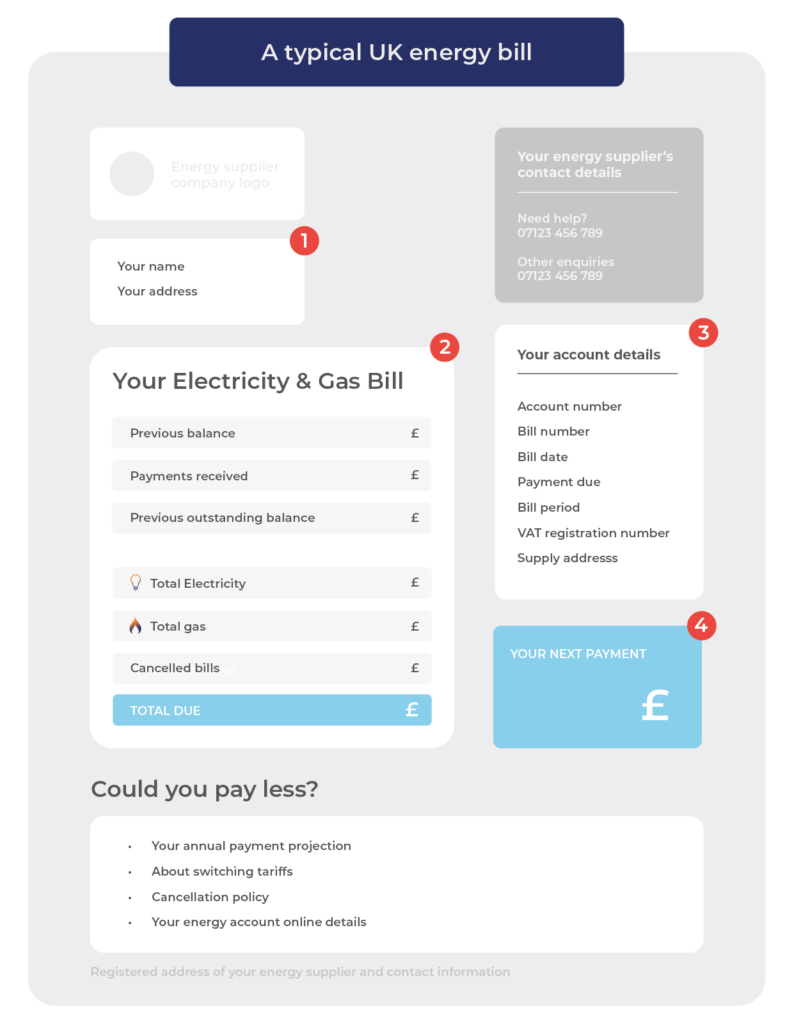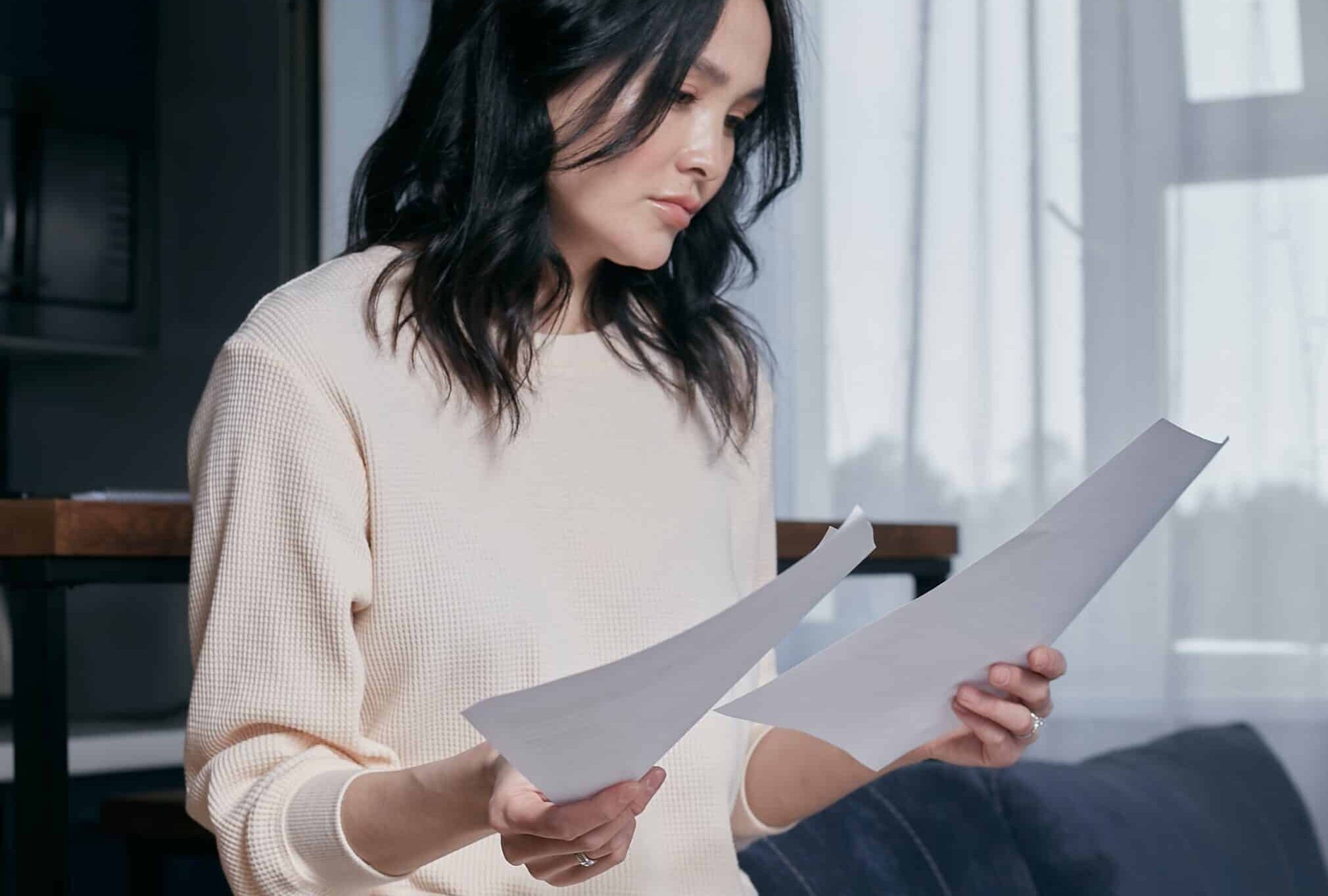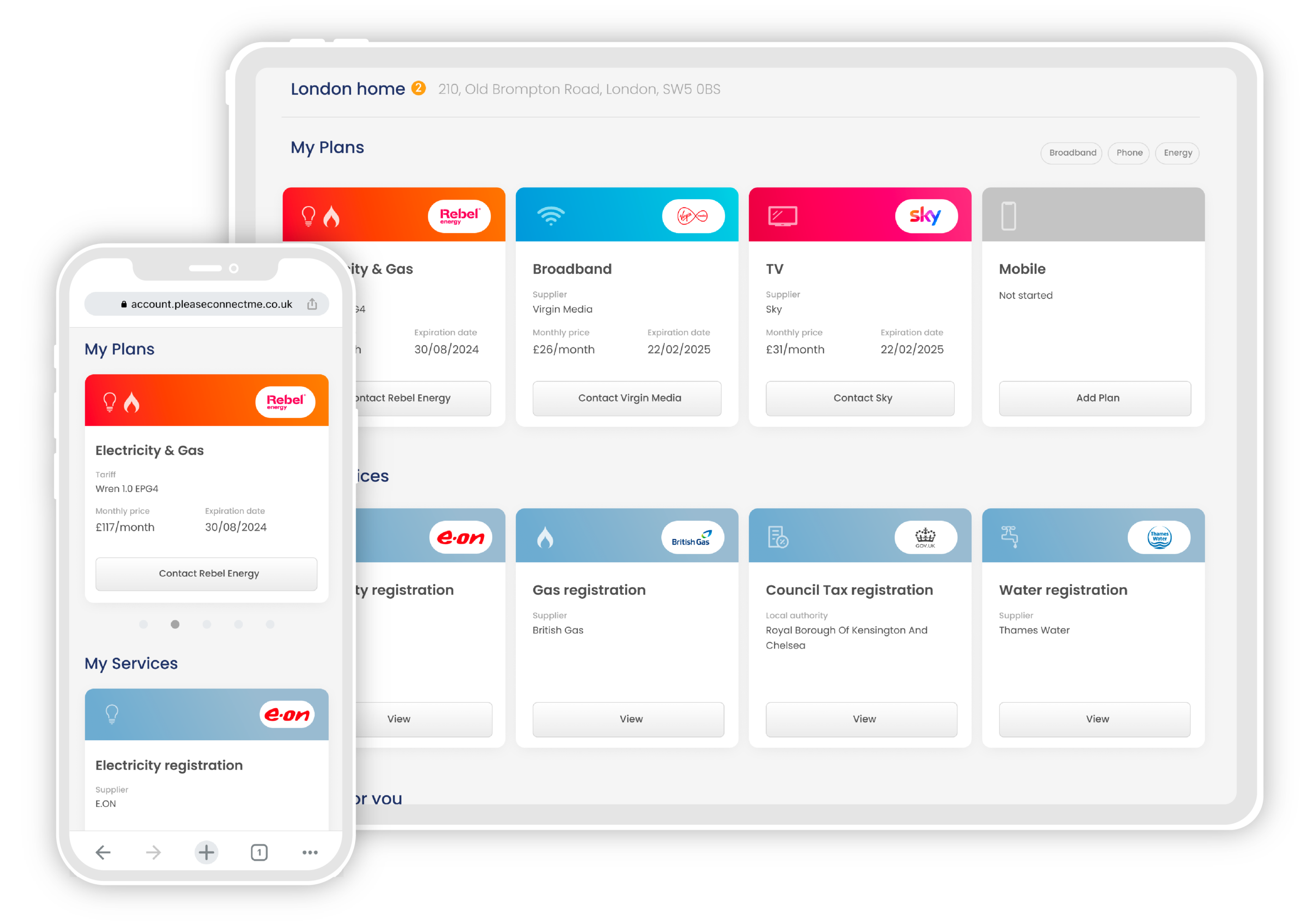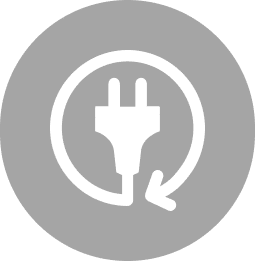The energy price cap level for the period 1 January to 31 March 2024 is £1,928 a year for a typical household that uses gas and electricity and pays by Direct Debit.
To ensure you are charged the right amount, it’s important to know how to read your energy bill. Your energy bill is full of essential info, but it can be hard to find the details you need!
Below is our guide on how to read your energy bill and where to find the most important figures. Energy bills can look a bit different depending on the supplier, but they will have the same key details included, located in roughly the same place.

How to read your energy bill: Where to find the details you need
1) Personal details
Before worrying about how to read your energy bill, make sure the bill you’re reading is really for you! Check the address given matches your property address, and that the bill isn’t addressed to a previous occupant or landlord. A bill addressed to ‘the occupier’ or ‘resident’ will usually mean your registrations are still being processed, or that you haven’t told your new supplier that you’ve moved in.
Have you been sent someone else’s bill? Read our guide on how to avoid paying for other people’s utilities here.
2) This month’s bill
Account Credit
You’ll find your current account balance at the top of the billing section. this is made up of the payments you have made this billing cycle, minus your recorded energy usage so far.
Unit Rate and Standing Charge
These figures are one of two parts that make up your monthly bill calculation. Your unit rate is the amount you pay for each kWh of energy you use, and your standing charge is a daily fee you pay for continued energy supply. If you’re on a standard variable tariff, your unit rate and standing charge together shouldn’t exceed the energy price cap.
Meter readings or estimated readings
Alongside your unit rates, these figures make up the second half of the calculation. Your readings record how much energy you’ve used this month. This figure is multiplied by your unit rate to calculate your monthly bill. If you don’t provide meter readings every month your supplier will use an estimated reading – often marked with an [E]. Estimated readings are usually higher than actual usage, so submit meter readings early and often.
3) Account Details
Your account number will appear in the top right corner of your bill. You’ll need this to open an online account, or if you ever need to reach out to your supplier’s customer service.
4) Your next payment
Finally, at the bottom of the bill, you’ll find your next payment amount. This probably won’t be the same as this month’s charge; because people use more energy in the winter most suppliers charge based on your average use over 12 months. Unless energy prices or your usage changes, you’ll pay the same every month. You should also see how your next payment will be taken – automatically if you have a direct debit, or by making a payment online or by phone.













